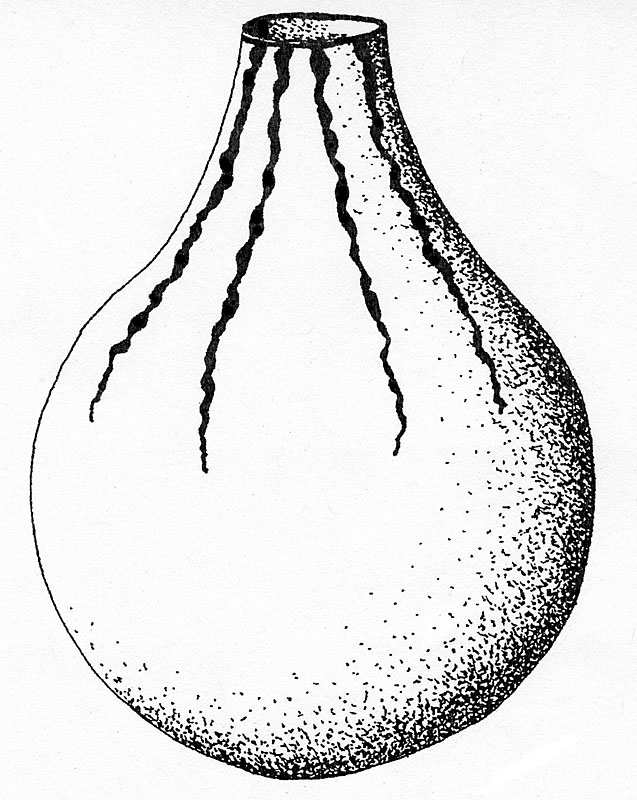Copano Bay

"Copano Bay” (along with its sister motif “Matagorda Island”) represents one of the most common of all asphaltum-painted motifs found on Rockport ceramics. It is marked by a black lip band that usually covers both the top and exterior edge of the vessel rim, sometimes the interior edge, and from which descend individually painted wavy or squiggled vertical lines on the exterior portion of the vessel. Such lines can be either slightly or highly wavy, and be narrow, medium, or wide in width. With more data in the future, it may be possible to identify additional motifs based on the width and “waviness” of the lines. In the past, this motif would have been included in the type Rockport Black-on-gray II proposed by Robert Ricklis.
The “Copano Bay" motif (and/or “Matagorda Island”) was one of the earliest of all decorative patterns recognized on Rockport ceramics, and it has consistently remained so throughout the years. It also is one of the most widespread motifs, occurring on sites throughout all of the central Texas coastal area. Ricklis has suggested that many of the vessels exhibiting this motif might have functioned specifically as containers for water or other liquids, and that the wavy lines symbolically represent the flowing liquid.
Interestingly, Maria Mounger illustrated several sherds of Goliad Black-on-buff from Mission Espíritu Santo that contain vertical wavy lines reminiscent of the “Copano Bay" motif. One of the sherds (in the upper right-hand corner of the plate) appears to be a rim with an associated black band. If the latter is the case, then it can be hypothesized that a motif very much like that of “Copano Bay” still was in vogue at least into the eighteenth century.